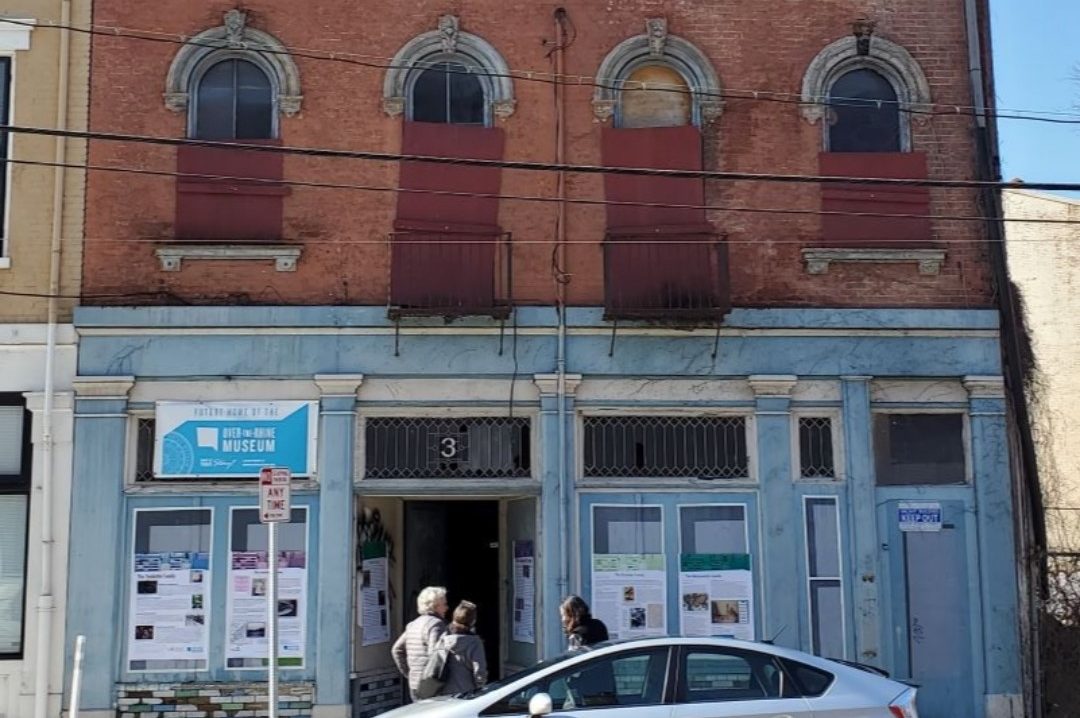In development for several years now, the Over-the-Rhine Museum will serve as a monument to the cultural history of Cincinnati’s historic Over-the-Rhine neighborhood. All of us at the Urban Appalachian Community Coalition are excited to watch the museum come to life and bear witness to the rich and varied history of the neighborhood. As the museum takes shape, and the building that will house the museum is restored, the Over-the-Rhine Museum is still offering us ways to look into the history of the neighborhood and the city. Among the many things that will eventually be in the museum itself, are apartments made to reproduce the living conditions of families who have called Over-the-Rhine home over more than a century.
The Over-the-Rhine Museum has four to six apartments dedicated to interpreting the experience of families who lived in Over-the-Rhine. These families are representative of the kinds of people that shaped the history and culture of Over-the-Rhine over the decades. Donna Harris, Director of Museum Administration, explained that they have not decided exactly how they will interpret these spaces, but at this stage they have decided to include German, Russian-Jewish, African American, and Appalachian families. The inclusion of an Appalachian family in the curated spaces of the Over-the-Rhine Museum is great news for urban Appalachians. As Donna Harris told me, “We don’t think we can tell the story of Over-the-Rhine without telling the stories of Appalachians in the neighborhood.”
Part of the Appalachian dimension of the museum will involve walking tours of Over-the-Rhine that discuss the place of Appalachians in the history and formation of the neighborhood. The period of the Great Depression saw the arrival of the first round of Appalachian migrants to Over-the-Rhine. In search of employment in industrial Cincinnati, Appalachians found Over-the-Rhine to be a destination with the clusters of tenement houses that accommodated new arrivals. The Over-the-Rhine Museum is in the process of reviving one of these tenement houses to house the museum itself.
Donna Harris said that the Over-the Rhine-Museum is patterned after the Tenement Museum in New York City which tells the stories of working-class residents in the tenement houses in New York. The Over-the-Rhine Museum shares this focus on working-class people who made up so much of Cincinnati. Appalachians have been a substantial percentage of the people who made Over-the-Rhine home and worked in the factories that once defined the City of Cincinnati. The museum will occupy an historic tenement in Over-the-Rhine, and the goal is to tell the story of Over-the-Rhine and urban America more generally through the stories of the people who lived in tenement houses just like the one that will house the museum.
Donna Harris described the apartments that will be curated by the museum: “Each apartment will be made to look like these families are still living here. Each will have specific items that speak to the culture and experiences of these families.” The apartments will ask questions of visitors. For example, what was it like for an immigrant mother raising children in a space such this? For an Appalachian family living in a tenement with family members working in local industry, we may ask what kinds of things would stand out among their possessions in one of these apartments. The Over-the-Rhine Museum speculates, based on abundant evidence, that material pertaining to the labor movement of the early 20th Century may be found in this space.
Harris also said, since the lives of so many of these people was deeply defined by industrial labor, some of the features of the Appalachian family apartment may include labor organizing materials. Donna Harris explained that many people in Cincinnati do not realize how much Cincinnati was involved in labor organization. Appalachian migrants were on the forefront, and they fought for things like the weekend, the eight-hour day, and basic labor rights.
The Over-the-Rhine Museum is committed to telling this story as much as they are to telling the story of individual families.
The Over-the-Rhine Museum’s building is at 3 West McMicken/12 Findlay (it is an L-shaped building). They are still in the process of restoring the property. First up: they are working on restoring the old storefront on the first floor of the building and bringing to life the stories of the businesses that occupied this storefront over the years. As they move toward restoring the rest of the building, the apartments will emerge and begin revealing the stories of families in Over-the Rhine. Donna Harris told me the Museum is currently providing walking tours of the neighborhood. She explained these tours “take a deep dive into the history of Over-the-Rhine. We have one that starts at Findlay Market, one that begins at Music Hall, and tours that focus on African American history and another that centers on labor history in Over-the-Rhine.”
The Urban Appalachian Community Coalition is well aware of the history of Appalachians in Over-the-Rhine. The very term “urban Appalachian” has some of its origin in the early work of people like Core member Michael Maloney and urban Appalachian advocate Ernie Mynatt who began the work of advocacy on behalf of urban Appalachians in Over-the-Rhine in the 1960s. As the Over-the-Rhine Museum creates a central space for the preservation of the history and culture of Over-the-Rhine, it is gratifying to know that the role of Appalachians in Over-the-Rhine will have a central place in the Museum’s mission.
Mike Templeton is a writer, independent scholar, barista, cook, guitar player, and accidental jack-of-all-trades. He is the author of the forthcoming The Chief of Birds: A Memoir. Available later this year from Erratum Press. Check out his profile in UACC’s new Cultural Directory. He lives in downtown Cincinnati with his wife who is a talented photographer. They spend their free time walking around the city snapping photos. She looks up at that the grandeur of the city, while Mike always seems to be staring at the ground.

